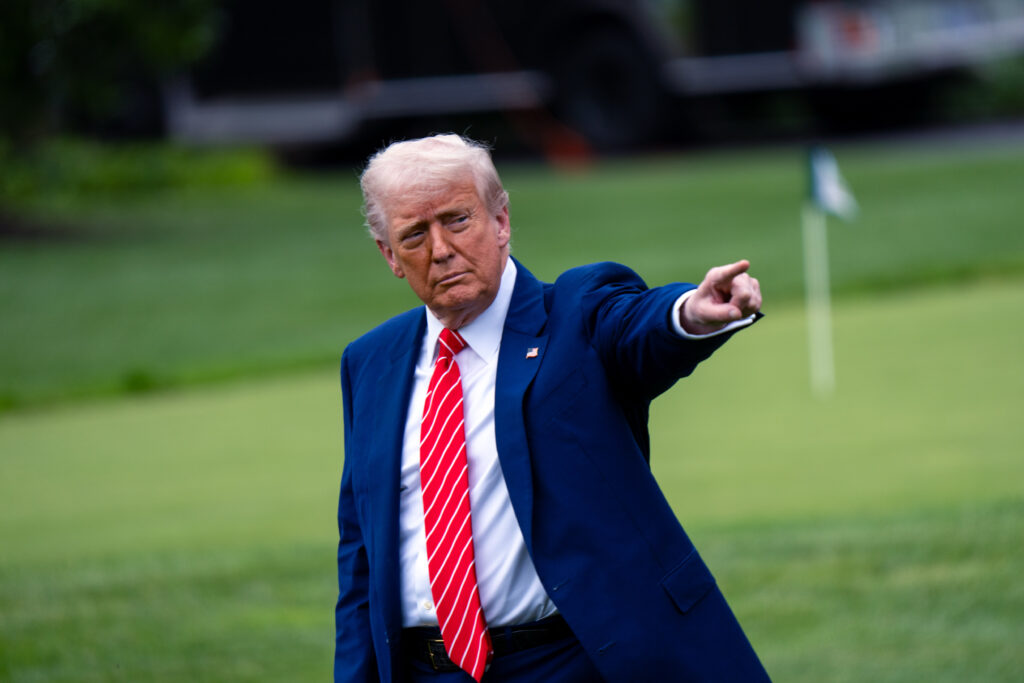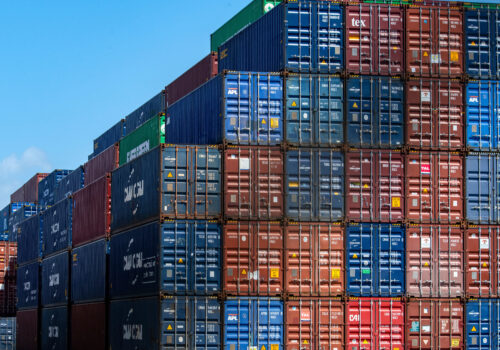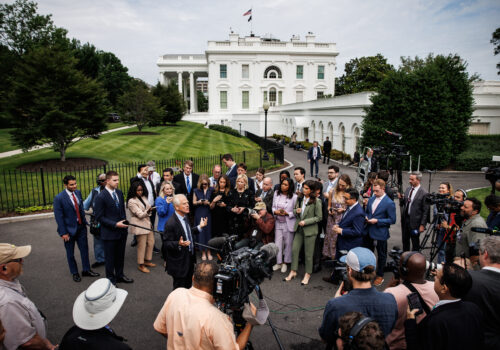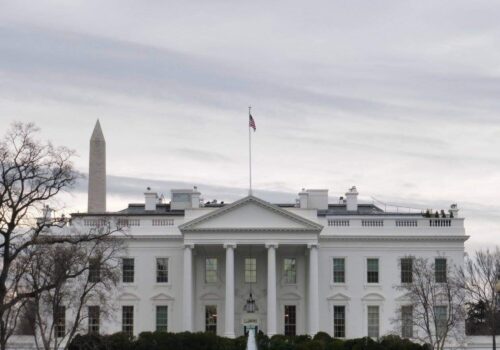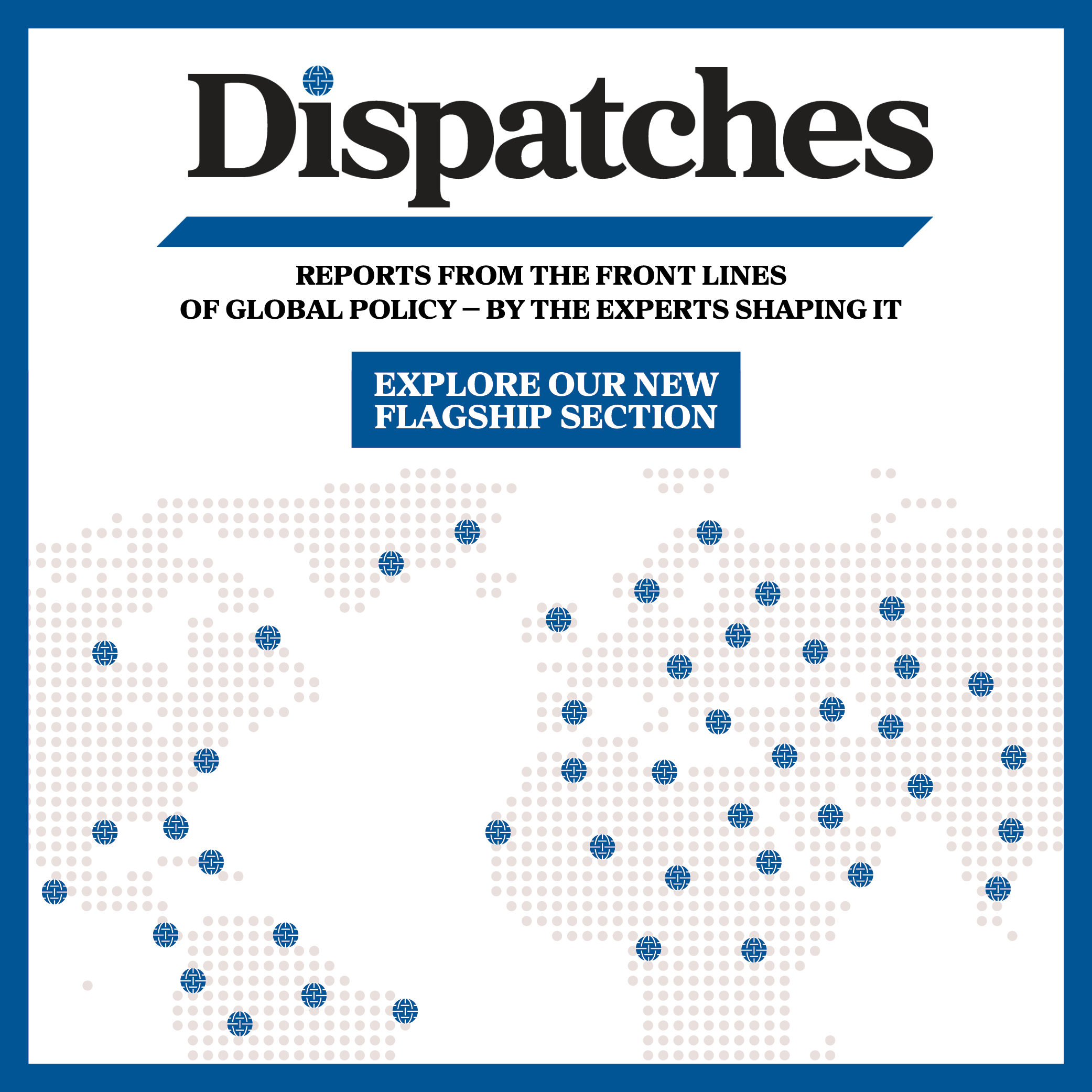US President Donald Trump’s tariff regime hit a legal stumbling block last week, with rulings by the US Court of International Trade in New York and the US District Court in Washington, DC. The rulings invalidated tariffs Trump has imposed under the International Emergency Economic Powers Act (IEEPA), though those tariffs remain in place for now after the court injunctions were stayed.
Some US trading partners may be tempted to celebrate and retreat from or slow the pace of negotiations with the United States, perhaps to wait and see how appellate courts rule. But these US partners should not breathe easy, as Trump can impose substantial tariffs under other authorities that are less susceptible to legal attack—with Section 301 of the Trade Act of 1974 likely foremost among these authorities. And, importantly, if tariffs are imposed under this authority, then they will be more difficult to reduce or remove in response to positive negotiations. Therefore, trading partners should see the recent court decisions as an opportunity to reach a more stable agreement with perhaps a more eager counterpart, rather than a justification to escape engagement with the Trump administration.
When Trump announced IEEPA tariffs in early April on imports from nearly every country around the world, virtually all of them lined up to seek an agreement with the United States that would reduce or eliminate these “reciprocal” tariffs. They joined Mexico and Canada, who had already been engaging on separate IEEPA tariffs that were announced in early February in response to drug trafficking. Since then, the United States and United Kingdom have announced a high-level framework, and substantial progress reportedly has been made with India, Vietnam, and others. More difficult conversations with the European Union are ongoing. And after a series of escalations, China too reached a temporary truce, reducing the reciprocal tariffs on China-origin goods to 10 percent for the time being. Goods from Mexico and Canada also received a reprieve of sorts, with the Trump administration quickly exempting goods entitled to preferential treatment under the rules of the US-Mexico-Canada Agreement (USMCA).
The president’s use of IEEPA to impose tariffs, which two courts ruled unlawful, was novel. While IEEPA is frequently invoked to institute sanctions, it had never previously been used to impose tariffs. But other congressional delegations of authority exist—namely, Section 301 and Section 232 of the Trade Expansion Act of 1962—and legal challenges to their use to impose tariffs have largely been unsuccessful.
During his first term, for example, Trump imposed broad-based tariffs on China-origin goods under Section 301, following an investigation into China’s unfair intellectual property-related trade practices, including forced technology transfer. US President Joe Biden expanded those tariffs, and they remain in place today. Trump also imposed tariffs under Section 232 on steel and aluminum from around the world during his first term. Those tariffs remained throughout the Biden administration with some country-specific modifications or product-specific exclusions, and Trump strengthened and expanded those tariffs in the early days of his second term.
The Trump administration likely will use Section 232 as the basis for some sector-specific tariffs. Already, the Department of Commerce is conducting Section 232 investigations on a hefty list of imports, from timber and lumber to copper and trucks; from semiconductors and semiconductor manufacturing equipment to pharmaceuticals and pharmaceutical ingredients; and from processed critical minerals and derivative products to commercial aircraft and jet engines. But I will focus on Section 301 because that is the more likely authority if Trump is looking to replicate the IEEPA tariffs, or more precisely, the leverage those tariffs afforded his negotiators.
How does Section 301 work?
Section 301, implemented by the US Trade Representative (USTR), investigates whether acts, policies, or practices of a particular country are unjustified, unreasonable, or discriminatory, and burden or restrict US commerce. By statute, the investigation must conclude within one year, but there is no minimum amount of time it must take. In the past, USTR has published a detailed report outlining its findings and evidence. This helps legitimize the findings and aids in discussions with allies and partners around the world by socializing and substantiating the concerns. But it is not required, and it could be slimmed down or scrapped in pursuit of speed.
There are, however, limits to how quickly a Section 301 investigation can proceed. USTR must take public notice and comment on the substance of the investigation and hold a hearing if requested. If there is an affirmative finding, USTR must also subject any proposed remedial actions (e.g., tariffs) to public notice and comment. And, under a 2022 CIT ruling that such determinations are subject to the Administrative Procedures Act, USTR must take the time to provide in writing its reasoning for rejecting substantial lines of argument raised by commenters. Once implemented, Section 301 tariffs can be modified if “appropriate,” a largely untested but no doubt expansive standard that suggests courts will show a great deal of deference to the USTR. But any proposed modifications too must be subjected to a notice and comment process. Trump almost certainly opted for IEEPA in the first place because it obviates the need for such a time-consuming process.
Moreover, unlike the global framing of Trump’s IEEPA tariffs and Section 232 findings, Section 301 focuses on the acts, policies, or practices of one particular country. There are two ways to broaden its scope to approximate the more far-reaching impact of the invalidated IEEPA tariffs. First, USTR could simply initiate a series of parallel Section 301 investigations into a common concern among several countries, as it did in 2020 with respect to digital services taxes of eleven different jurisdictions. Second, although it has never been used, Section 301 includes a provision that allows for remedies to apply on a “nondiscriminatory basis”—that is, globally—even though the investigation focused on the acts, policies, or practices of one particular country.
So, while Section 301 may entail more process and certain constraints, it provides a relatively straightforward pathway to broad-based tariffs. Notably, the statutory objective of remedies under Section 301 is the elimination of the investigated acts, policies, or practices. The statue explicitly states that the USTR is authorized to take action “against any goods or economic sector . . . without regard to whether or not such goods or economic sector were involved in the act, policy, or practice that is the subject of such action.” Thus, regardless of which unfair practices the USTR chooses to investigate, an affirmative finding would unlock broad powers to tariff any goods. And it closely resembles the “leverage” justification for tariffs that the CIT rejected as insufficient in the IEEPA context.
What Section 301 tariffs would mean for bilateral negotiations?
Trump has demonstrated a clear determination to alter terms of trade, and he has been equally committed to using tariffs not just as policy, but to shape and respond to negotiating dynamics. Should certain bilateral negotiations prove unsatisfactory, it is very likely that the Trump administration would pursue tariffs under a different authority like Section 301. US trading partners would be wise to try to avoid that result.
The speed that IEEPA enabled for imposing or increasing tariffs is a two-way street, meaning that the Trump administration could quickly employ removals, decreases, or exceptions in response to positive momentum in negotiations. Some may welcome the added process around Section 301 because it could slow the pace of change. But that same process would make Section 301 tariffs stickier once imposed. It could also create difficulty in comprehensively pulling down tariffs against a particular country should that partner make concessions the administration finds valuable but are not germane to the investigated acts, policies, or practices. The Section 301 and Section 232 tariffs from Trump’s first term have proven very durable.
What about other authorities to impose tariffs?
While Trump may proceed with sector-specific tariffs under Section 232, they are not a good fit for replicating the IEEPA tariffs because they focus on threats to national security from particular products. That makes it hard to tariff a broad range of products and limits flexibility to alter the scope or rate of tariffed products as negotiations and economic dynamics shift.
The CIT opinion pointed to Section 122 as an option to rectify goods trade deficits, but Section 122 tariffs are capped at 15 percent and can remain in effect for only 150 days. Those limitations severely undermine the leverage Trump covets.
Finally, the administration could attempt to invoke Section 338 of the Tariff Act of 1930 (often referred to as the Smoot–Hawley Tariff Act), which authorizes tariffs in response to a foreign country’s discrimination against US goods or the commerce of the United States. Section 338 not only predates the World Trade Organization, it predates the General Agreement on Tariffs and Trade (GATT), which first established the principle of most favored nation treatment in 1947.
Section 338 imposes no temporal limitation on tariffs, but it does provide for a maximum tariff rate of 50 percent. While it appears to require no real time-consuming investigation, it has never been used, and there are virtually no mentions of it anywhere in the public record after the establishment of the GATT. Thus, there is uncertainty from novelty, which is what did in IEEPA, at least for the time being. Moreover, the administration would need to make sense of how mechanically to apply this previously unused, nearly century-old authority. Given these uncertainties, the Trump administration may favor using this authority as a tacit threat in negotiations, but not actually invoking it and inviting judicial scrutiny.
The bottom line remains that Trump still has many tariff tools at his disposal and, if implemented, they may prove harder to pull back. Therefore, US trading partners would be better served to treat the recent court rulings as an opportunity to drive ongoing discussions to their conclusion. The uncertainty created by the court decisions, the time required to reasonably replicate a large swath of tariffs through other authorities such as Section 301, and the procedural constraints those other authorities impose on the president’s flexibility, should make the administration more eager to reach deals it approves of and that allow it to avoid those difficulties. Where trading partners remain engaged and determined, the urgency on both sides presents the best opportunity for a mutually agreeable deal, which will provide greater near-term predictability that all can celebrate.
Brian Janovitz is a partner at DLA Piper. He previously served as director for international economics at the National Security Council and National Economic Council and chief counsel for trade enforcement strategy and competitiveness at the Office of the US Trade Representative, where he led the Biden administration’s comprehensive review of Section 301 tariffs.
Further reading
Fri, May 30, 2025
Experts react: How the world is responding to the courtroom drama around Trump’s tariffs
New Atlanticist By
Several recent court rulings have complicated the US president's plans to impose sweeping tariffs—and US trading partners are watching.
Tue, May 27, 2025
Dispatch from London: Engaging Trump without alienating the rest
Econographics By Josh Lipsky, Charles Lichfield
The GeoEconomics team traveled across the pond for a series of meetings and events to determine if the recent US-UK trade deal could be a template for other countries seeking accords with the United States.
Fri, May 16, 2025
The next 120 days of predictably volatile trade policy
Econographics By Barbara C. Matthews
The understandable relief associated with de-escalating the tariff war will soon fade as we enter a long, uncertain summer of tariff pauses and major negotiations. Take a look at some convenings that might be important.
Image: President Donald Trump leaves the White House for a trip to Pennsylvania, where he meets with steelworkers following the Japan-US Steel agreement. (Photo by Andrew Leyden/NurPhoto) REUTERS
